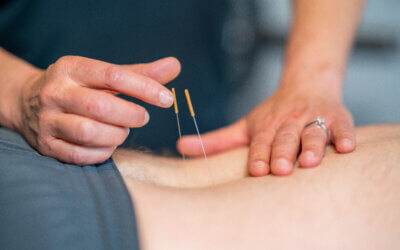Sometimes surgery is the most effective option for painful symptoms that interfere with your quality of life. Since your hips play an essential role in your everyday movements, such as walking, it’s possible that surgery may be needed if your hip is in pain or unable to properly function.
Hip replacement surgeries are a common procedure that can increase your mobility while decreasing pain. But recovery doesn’t happen overnight, which is why it’s important to take the correct course of action to speed up the time frame. That’s where physical therapy comes in.
We’ll talk about who can benefit from a hip replacement surgery, how physical therapy can help, and what hip replacement surgery recovery and rehabilitation looks like.
Why you may need hip replacement surgery
Hip replacement surgery, also known as hip arthroplasty, is a procedure that involves surgically removing the damaged cartilage and bone from the hip joint to replace them with artificial parts. They’re often made with metal, plastic or ceramic materials.
Hip replacement surgeries are held often in the U.S., with surgeons performing more than 300,000 every year. While total hip replacement surgery is the most common form of the procedure, there are also partial hip replacements as well as hip resurfacing.
Hip replacement surgery is used to alleviate pain and improve the hip’s mobility that has been affected by:
- Fracture due to injury or bone disease.
- Osteoarthritis.
- Rheumatoid arthritis.
It’s important to note that a hip replacement surgery is often only considered by health care providers if other treatments haven’t been successful in the past, such as pain medication or assistive devices.
The role of physical therapy in hip replacement surgery recovery
Once you’ve had the hip replacement surgery, it’s important to immediately start rehabilitation to move along the recovery process.
While a hip replacement will improve your quality of life in the long run, you’ll experience a few symptoms for a while, including pain, reduced range of motion and stiffness. Pain is the most prevalent symptom that you’ll experience, especially after resting for an extended period of time. It’s also common for the pain to radiate from your groin or thigh down to the buttocks or knee.
A physical therapist can help you in a variety of ways during hip replacement surgery recovery, including:
- Learning how to properly move with the new hip joint.
- Decreasing pain.
- Improving the hip joint’s range of motion.
- Restoring balance and gait.
- Relearning how to complete daily activities with the new joint, such as sitting down and climbing stairs.
Manual therapy and targeted exercises are two physical therapy techniques often included in treatment plans for hip replacement surgery recovery. Manual therapy involves the physical therapist using their hands to improve your joint range of motion and break up painful scar tissue. Targeted exercises are used in every stage of your rehabilitation to improve your strength, balance and mobility.
What to expect from hip replacement surgery recovery
Everyone recovers from hip replacement surgery at their own pace, but the average patient can have a complete recovery in approximately three months with proper rehabilitation. The type of replacement and age of the patient play a role in the time frame.
A physical therapist will often help you through the several stages of hip replacement surgery recovery, including:
- First week following surgery: Get used to walking and moving around with the new joint, possibly with a walking aid.
- Weeks 2-3: Return to light activity with reduced pain.
- Weeks 4-6: Resume driving and work.
- Weeks 7-12: Be able to complete most day-to-day activities with little to no pain.
As exercises are essential to hip replacement surgery recovery, your physical therapist will slowly increase the impact of your targeted exercises as you advance through the stages.
Continuum Wellness can provide physical therapy to help you through hip replacement surgery recovery
For many people, hip replacement surgery can be life changing. It allows you to participate in the activities you enjoy without wincing in pain with every step. But it takes time to get there.
The importance of post-surgical rehabilitation shouldn’t be underestimated. At Continuum Wellness, our physical therapists can help you learn how to move with your new hip joint so that you’re able to return to your everyday tasks. We’ll slowly ease you back into your activities by helping you manage your pain while restoring the function and mobility of your hip.
Call us or request an appointment today to receive physical therapy for hip replacement surgery recovery.



